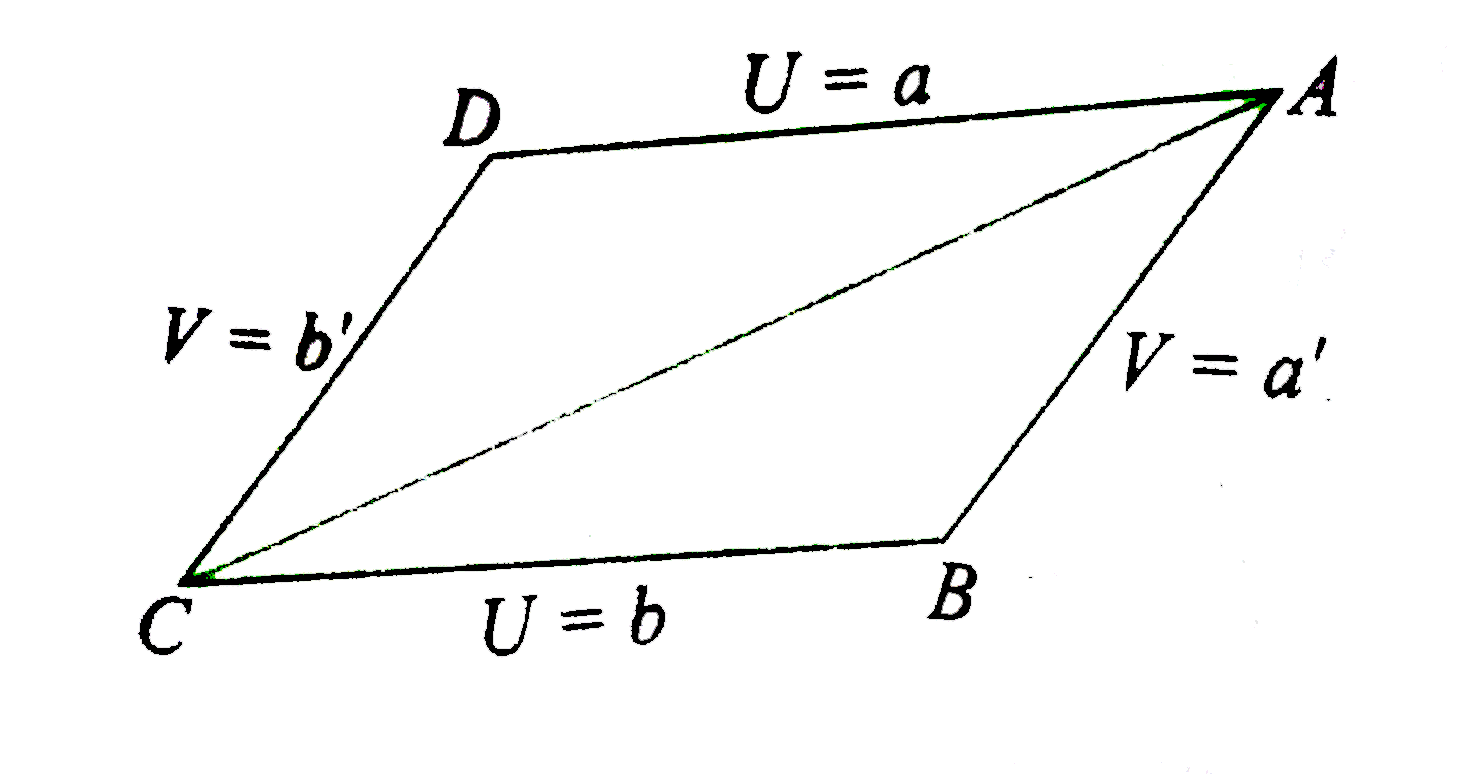InterviewSolution
Saved Bookmarks
| 1. |
Let the sides of a parallelogram be U=a, U=b,V=a' and V=b', where U=lx+my+n, V=l'x+m'y+n'. Show that the equation of the diagonal through the point of intersection of U=a, V=a' and U=b, V=b' " is given by " |{:(U,V,1),(a,a',1),(b,b',1):}| =0. |
Answer» Solution :Parallelogram is formed by lines U=a, U=b, V=a' and V=b', where U=lx+my+n, V=l'x+m'y+n'  Let the required diagonal be AC. SINCE ONE end A of the diagonal AC passes through the point of intersection of lines U-a=0 and V-a'=0, its EQUATION is given by `(U-a)+lambda(V-a')=0 "" (1)` But the other end C of the same diagonal passes through the point of intersection of lines U-b=0 and V-b' = 0. So, its equation is given by `(U-b)+MU(V-b') = 0 "" (2)` Equation (1) and (2) represents the same straight lines. `THEREFORE 1=(lambda)/(mu) = (a+lambdaa')/(b+mub')` `rArr lambda=mu = -((a-b)/(a'-b'))` Putting the value of `lambda` in (1), we get `(U-a)-((a-b)/(a'-b'))(V-a')=0` `" or" |{:(U,V,1),(a,a',1),(b,b',1):}| =0` This is the required equation of diagonal. |
|